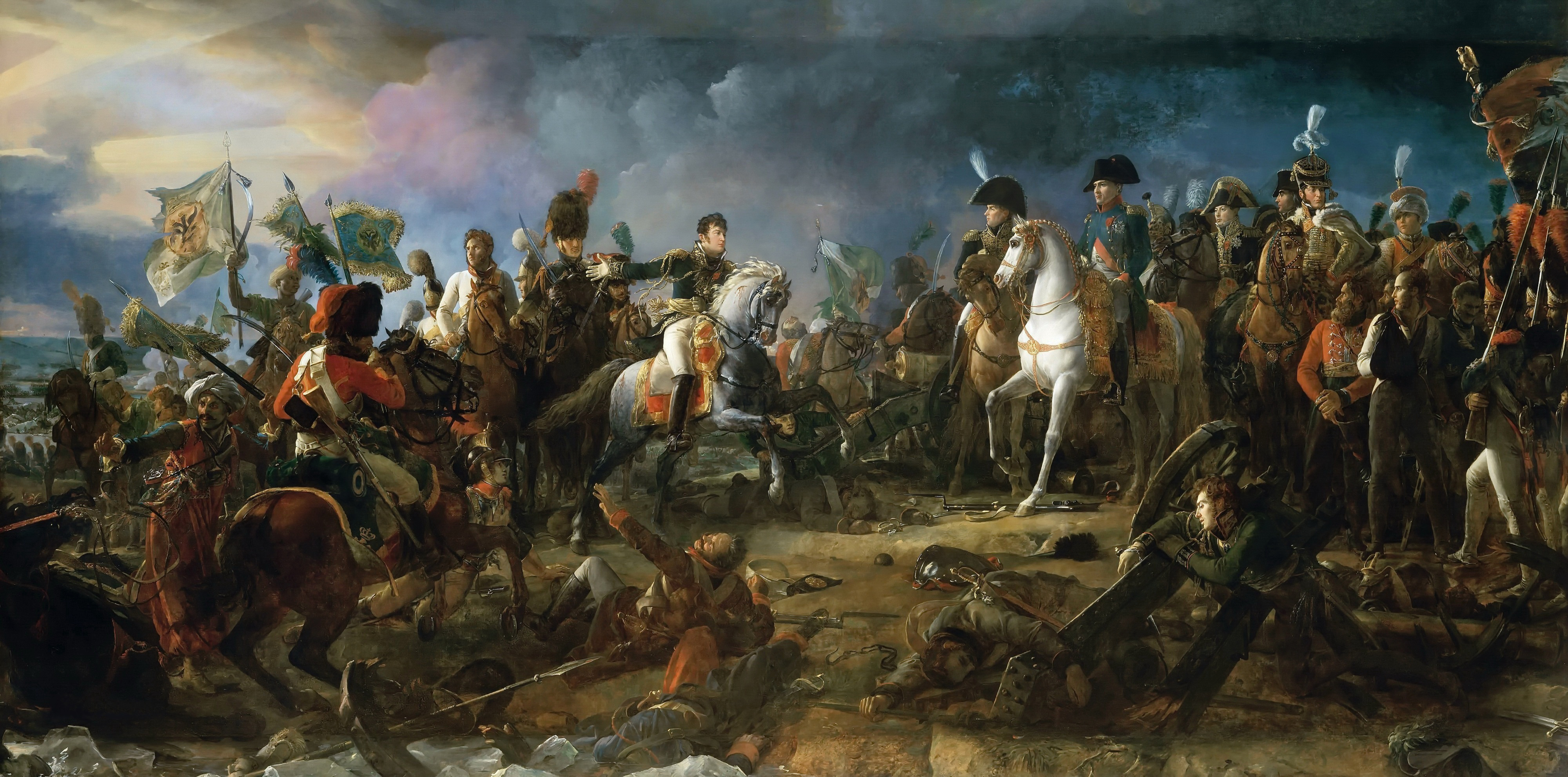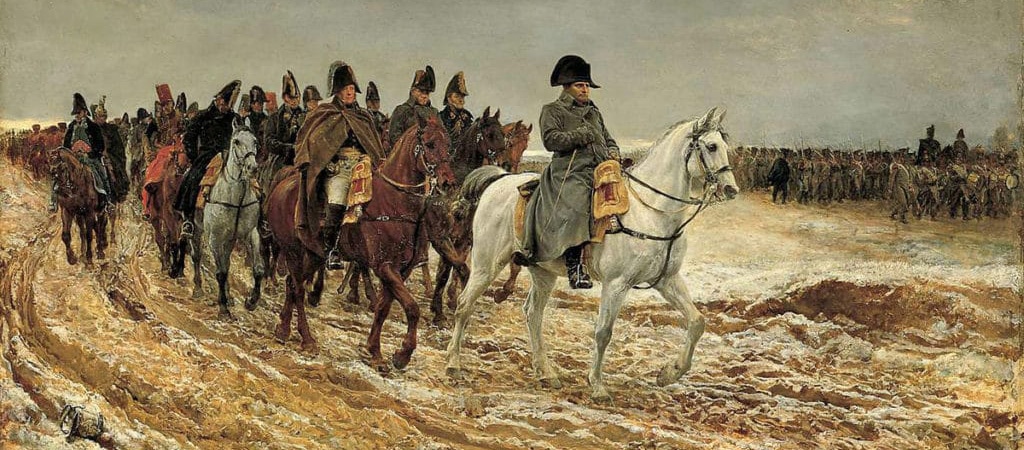Enthusiastic or detractor, there are many who engage in a war of numbers to acclaim or denounce Bonaparte's military operations and their cost in terms of human lives. What is it really?
Although it is difficult to obtain an exact figure, many historical studies are today consensus and allow not only to better understand the Napoleonic history but also to place it in relation to other great wars which marked France and the European continent. We will also appreciate the quality of the long, patient and referenced work of emeritus historians in the face of the epileptic and vociferous agitation of Internet users who are too happy to be freed from any academic commitment to shout a story rewritten by their care, a story whose primary quality is to travel light; in fact, these individuals rarely encumber themselves with serious bibliographic sources. That being said, it’s okay (but not always, as everyone sees on a daily basis) to use the numbers with caution. Chateaubriand accused Napoleon of having killed more than five million French people in eleven years of reign. We know the literary value of Chateaubriand’s writings, we can no longer ignore after reading such an assertion the little importance he made of learning mathematics. Because indeed, figures can say anything and everything depending on whether or not the details are given. How did Chateaubriand arrive at this figure? Impossible to say. Was he a sharp critic of Bonaparte? Did he have any complaints against him? This is no longer to prove. Can we consider as fair and objective the figures put forward without argument by a man who resented the one he accused? Maybe not. This is why the work of historians is once again capital and essential to consider calmly and as objectively as possible such a burning subject.
The death toll attributed to Napoleon’s military deployments spanned fifteen years in several countries. To suspiciously attribute several million deaths to Bonaparte is often an assumed or even claimed approximation, peremptory affirmations are always more comfortable than the complicated meanders of nuance and study. Of course, it is not a question of being naive: the Napoleonic campaigns were not walks in the park and, over fifteen years, the human losses, whatever the camp which one chooses, are considerable. But are they more so than other conflicts before (the Thirty Years War) or after (the First World War)? The response of historians tends to be negative.
Calculating French losses: laborious work
Before considering the figures put forward by historians, let us recall that before the present day, human losses were not or little counted, leaving room for partisan assumptions that were often excessively high or excessively low. Jacques Houdaille (1924 – 2007) – teacher at several American universities and director of research at the National Institute of Demographic Studies (1970-1988) – used the army personnel registers to assess Land army losses under the First Empire. His studies of historical demography are today considered the most reliable by historians and scholars of Napoleonic history. From the start of his study, he drew attention to:
A confusion, difficult to avoid, between soldiers who died in combat and soldiers who died or disappeared under the Empire [which] allowed all the more fanciful assertions since, even for the losses of the French army, it was difficult to distinguish the French born in France, within its borders of 1815, Belgians, Italians, Rhenish and Dutch born in the annexed departments between 1792 and 1811.
This gives a little insight into the difficulty, knowledge and mastery of research protocols and historical tools as well as the patience required to undertake such a study. The figure put forward by Chateaubriand quickly appears inconsistent compared to those collected by researchers. Because if 2,432,335 French were called to military service from 1799 to 1815, two million were actually conscripted (Chateaubriand’s five million are largely excessive). For France alone and based on the work of Jacques Houdaille and those of other historians, we manage to establish a high (one million dead) and low (400,000 dead) range of human losses over the cited previous period; and if the estimate is still difficult, as Thierry Lentz, the director of the Fondation Napoléon, rightly points out, it can reasonably be argued that the average range – or around 700,000 French deaths – is the closest to the truth.
European losses and losses during the great battles
This fifteen years of history obviously did not affect only the French. The European toll is also high and the average estimate tends around more or less two million dead, including the human losses of Russia (500,000 men), Prussia and Austria (500,000 men), the Poles and Italians (200,000 men), the Spaniards and Portuguese (700,000 men) and the British (300,000 men). *
The reports are further refined thanks to the patient studies of the battles led by Danielle and Bernard Quintin ** using the method of Jacques Houdaille. Thus for the Battle of Austerlitz (December 1805), there were 1,538 dead in the French camp for 72,500 combatants, or 2.12% of the troops. In Eylau (February 1807) 2711 died and 44 presumed dead, i.e. a 5% loss, and at Friedland (June 1807) 1,849 men were killed, 68 presumed dead and 341 missing.
Of course, the loss of life is colossal and always too high, whatever the conflict. But are they more so than other wars that have ravaged Europe? Obviously no.
The Thirty Years’ War (1618 – 1648) caused nearly two million deaths among combatants and even more among civilians. There are at least five million victims for a total population of fifteen to twenty million inhabitants in the Holy Roman Empire. The First World War caused 18.6 million deaths in four years, including soldiers and civilians. Some will be offended to see us compare conflicts and their losses with regard to the demographics of each era or to the weapon technologies employed. But in this case, how do you support the idea that Napoleon Bonaparte was a power-thirsty with no regard for the lives of his soldiers? An assertion works against a referent, and in either case (in comparison or without comparison) the argument does not hold. Judging Bonaparte’s action against what our time considers the right way to act as head of the army is also unreasonable. The beginning of the 19th century is a far cry from our post WWII era. However, let us insist on this point: Napoleon Bonaparte is not a holy personage or an incarnate demon. He was an ambivalent, opportunistic and ambitious personality in a time of turmoil. Let us also remember that the Napoleonic wars are largely (not all, we insist: in large part) the continuation of the wars of the French Revolution which then responded to the attacks of the united European monarchies.
Napoleon Bonaparte cannot be credited with the invention of war nor with the complete loss of life in the conflicts of the first fifteen years of the 19th century. Although an emeritus strategist, he was recognized during his lifetime – and testimonies abounded in this direction after his death – as a man close to his soldiers, the latter appreciated and recognized his experience in the field. A quality that many military leaders will not have during the First World War, a hundred years later.
As often, this historical figure crystallizes blind partisanship or stubborn hatred, the two having in common being simplistic. As History is nuanced, so are the characters who make it up. Only the work of historians can scientifically shed light on the areas of our history; to better understand it, we must rid it of its preconceived ideas and accept to question our certainties in the light of the most serious and recent research.
Do you like this article?
Like Bonaparte, you do not want to be disturbed for no reason. Our newsletter will be discreet, while allowing you to discover stories and anecdotes sometimes little known to the general public.
Congratulations!
You are now registered to our Newsletter.
*Chiffres issus de l’étude de Alexander Mikaberidze, avocat et historien considéré comme un des meilleurs spécialistes étrangers du Premier Empire.
**Auteurs d’ouvrages de fond sur le Premier Empire, ils reçurent en 2007 le Prix spécial du Jury de la Fondation Napoléon pour l’ensemble de leur œuvre.
Marielle Brie de Lagerac
Marielle Brie de Lagerac est historienne de l’art pour le marché de l’art et l'auteure du blog « L'Art de l'Objet ».


